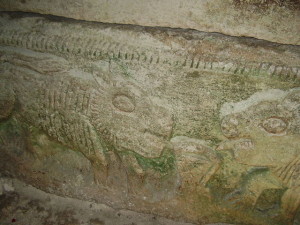The Tannaitic Academies
 Lawrence H. Schiffman, From Text to Tradition, Ktav Publishing House, Hoboken, NJ, 1991.
Lawrence H. Schiffman, From Text to Tradition, Ktav Publishing House, Hoboken, NJ, 1991.
In order to understand how this transition took place, and how the tannaitic corpus developed, some explanation of the history and function of the tannaitic academies is necessary. Yet we must caution that the term “academies” may be anachronistic. It conjures up an image of institutions in which there is an academic bureaucracy, a system of funding, and physical premises of some kind, but we cannot be sure that the tannaim always worked under such ideal conditions. Although the patriarchate sponsored the high court (Sanhedrin), it is not totally certain how the academies were organized and who funded them. It is also not clear whether they had specific premises. They may have met in synagogues or other facilities. At the same time, it should be noted that tannaitic sources mention houses of study along with the synagogues. This tends to support the claim that specific buildings and more organized institutions existed in the mishnaic period. Among the duties of the patriarch (nasi’) was the maintenance of the academies; and he designated an ‘av bet din, “head of the court,” to lead them. The power of the two officials was not constant, however, and there is occasional evidence of disagreement and even strife between them.
A generational scheme has traditionally been used since the Middle Ages to classify the tannaim and trace their history. The actual tannaim were preceded by a series of Pharisaic sages known as pairs (Hebrew zugot), one of whom, in each instance, is reported to have served as patriarch (nasi’), and the other as head of the court (‘av bet din), during the Hasmonean and Herodian periods. These culminate in Hillel and Shammai, said to be the last pair.
The last of the zugot were followed by the first generation of tannaim, consisting of the Houses of Hillel and Shammai, the two major schools, which were made up of the followers of these two great sages. The figures of the first generation were prominent immediately before and after the Great Revolt, and among the most notable were Rabban Gamaliel I, mentioned in the New Testament, Simeon ben Gamaliel I, who probably died in the revolt, and Rabban Yohanan ben Zakkai, credited with organizing the academy at Yavneh after the destruction of Jerusalem.
The second generation functioned after the revolt, from about 90 to 130 C.E., at Yavneh. Among these sages were Rabban Gamaliel II, who led the academy at Yavneh after Yohanan ben Zakkai, Rabbi Eliezer ben Hyrcanus, and the slightly younger Rabbi Akiva and Rabbi Ishmael. The second generation took the lead in reconstituting Jewish life in Palestine and in gathering together the traditions of their pre-70 C.E. Pharisaic and tannaitic forebears.
The third generation spanned the Bar Kokhba period and its aftermath, functioning from about 130 to 160 C.E. They were primarily the students of Rabbis Akiva and Ishmael of the previous generation. Prominent before the Bar Kokhba Revolt were Rabbi Meir, Rabbi Simeon ben Yohai, and Rabbi Judah ben Ilai. It is probable that Rabbi Meir began the editing of the Mishnah based on subject divisions he had learned from Rabbi Akiva. The leading rabbinic figure in the restoration of Jewish life after the Bar Kokhba Revolt was Rabban Simeon ben Gamaliel II, the patriarch. These scholars functioned primarily at Usha, in the Galilee, to which the patriarchal court had moved after the Bar Kokhba Revolt of 132-135 C.E.
The fourth generation covered the period of from about 160 to 200 C.E. This was the generation of Rabbi Judah the Prince (Hebrew nasi’ = prince, i.e. patriarch), the majestic patriarch who edited the Mishnah. His court was at Beth Shearim in the Galilee, and among his contemporaries were Rabbi Eleazar ben Rabbi Simeon (ben Yohai), Rabbi Simeon ben Eleazar, and Rabbi Nathan.
The members of the fifth generation, from about 200 to 225 C.E., are said to be semi-tannaim, as they were primarily younger contemporaries of Rabbi Judah the Prince, who continued their work after the Mishnah was redacted. Among them were Rabban Gamaliel III, the son of Rabbi Judah the Prince and himself also a patriarch, Rabbi Hiyya the Elder, and Bar Kappara. By this time, the center of the patriarchate and the court had shifted to the Galilean city of Sepphoris, the economic and social climate of which made it an ideal home for the sages of the Sanhedrin.
While the system of generations provides a useful chronological framework for the development of tannaitic Judaism, it does not adequately portray the great diversity of the tannaitic teachers, the complex, interlocking student-master relationships, or the geographic diversity. Yet these are the very factors which made for the richness of the tannaitic legacy. Generational schemes are ultimately based on a linear view of history, an approach considered normative in the Middle Ages, but outmoded in modern times. Modern scholarship is only now in the process of building up a more complete picture that will take these other factors into account, and it is certain to enrich greatly our understanding of this period and its literature.



